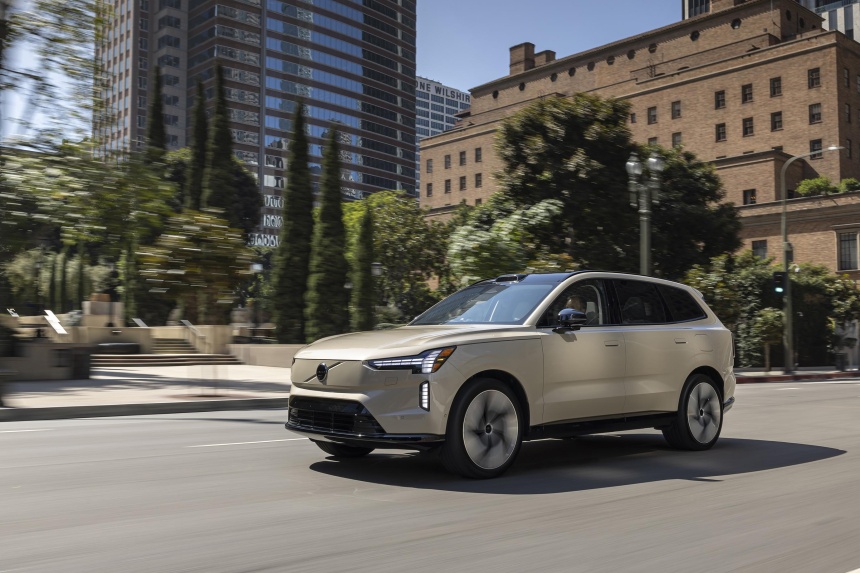NEWPORT BEACH, California – You might think this new all-electric Volvo seven-seater sport utility vehicle (SUV), the EX90, is the successor to the venerable XC90. Except that it is not.
The combustion-engine XC90 has just been facelifted and will continue alongside the EX90 for some time yet. Volvo says this two-pronged approach is to cater for markets not yet ready for full-electric cars.
But the generation gap between the two Volvo siblings is clear.
The EX90 was announced in November 2022, but due to developmental delays, production has only just started. It is worth the wait though, because Volvo’s new flagship is impressive.
It successfully melds the minimalist aesthetic of the smaller – and similarly all-electric – Volvo EX30 with the blockish, purposeful stance and lines of the XC90, for an almost Bauhaus look.
Too bad Volvo was not more adventurous with the proportions, which remain resolutely conventional – given that the car was conceived as a pure electric vehicle (EV) as opposed to being based on an internal combustion-engine platform.
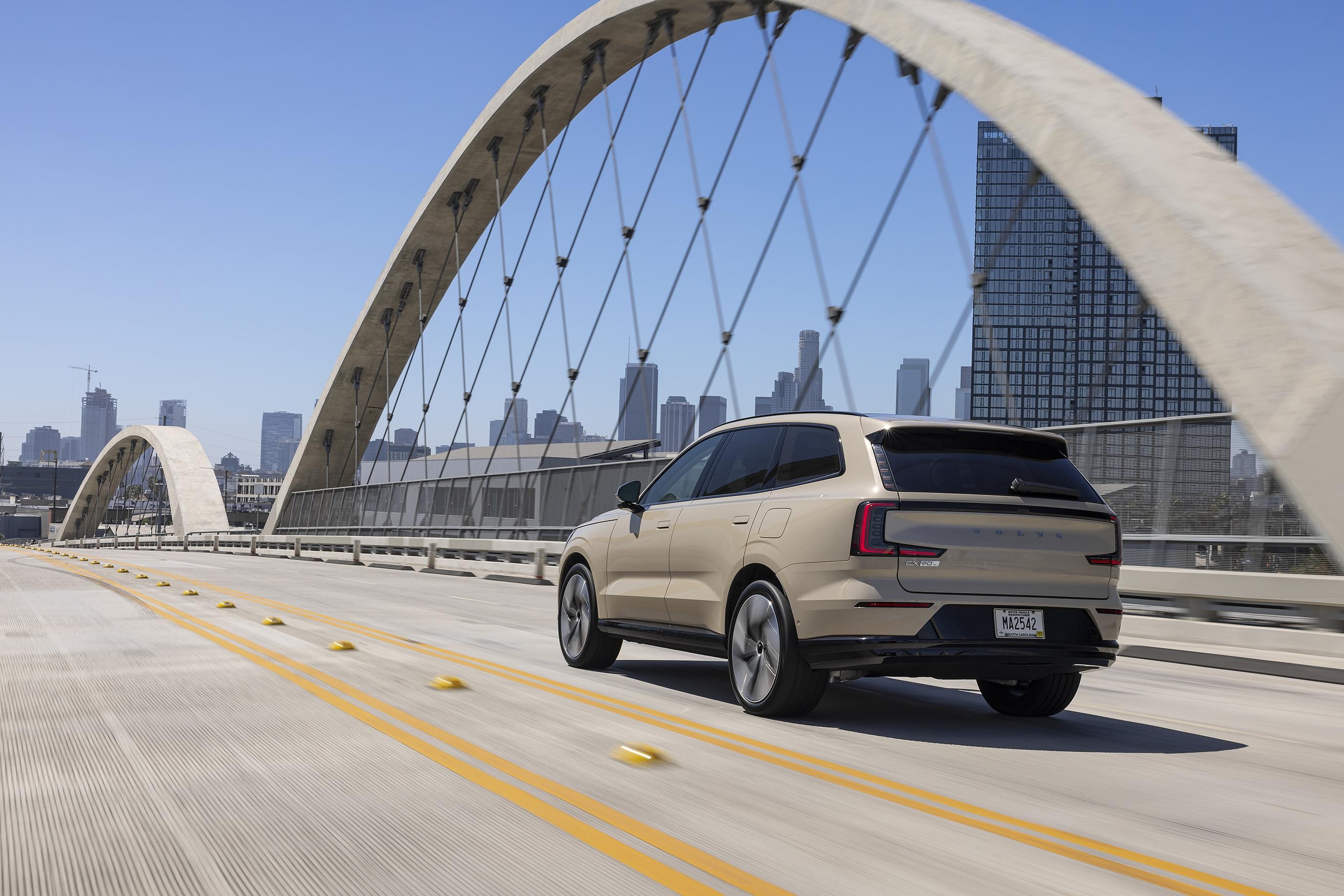
Instead of a short-front, cab-forward design to maximise cabin space, the EX90 still sports an unnecessarily substantial bonnet, even though there is no engine underneath.
At the launch, Volvo says this was to retain a “confident” front end. Maybe, but a thrusting prow is not the only way to achieve that.
As such, interior space, while good, is not a big step up from the XC90. It is roomy for the first two rows, but legroom is modest for adults in the third row unless the adjustable second row is pushed forward quite a lot. Entry and egress from that third row also involves a fair amount of contortion, especially since there is no grab handle.
Still, the cabin is plush and lovely. The interior styling mirrors the clean minimalism of the outside and light colours lift the mood, as does the standard full-length panoramic roof. The seats on the test car are clad in a particularly fetching wool blend, a nice change from the typical leather upholstery.
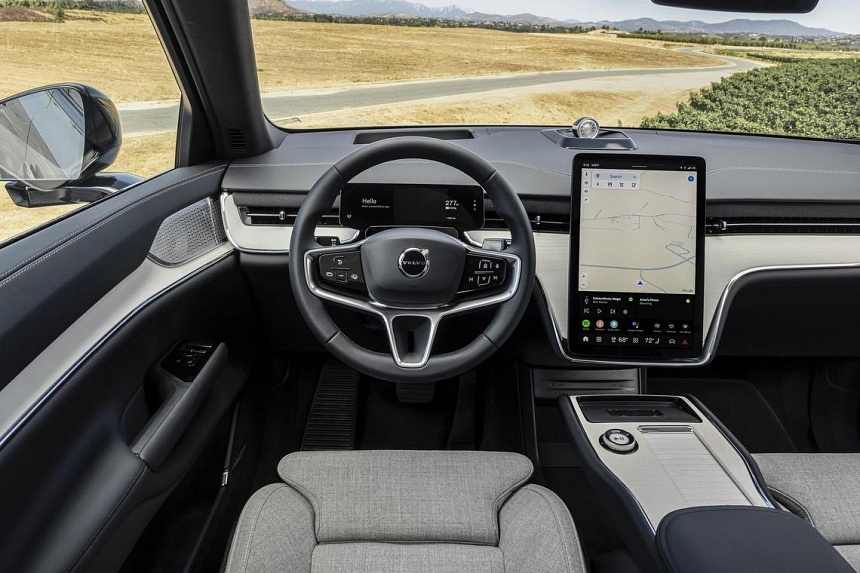
The gear selector lever is mounted to the steering column, freeing up useful space on the centre console. A 14.5-inch portrait-style infotainment touchscreen sits centre stage, supplemented by a smaller, horizontally-oriented digital display ahead of the driver which shows crucial information such as speed, range and satnav instructions.
However, most minor functions and controls are consigned to the big central screen – great for decluttering the dashboard, but dreadful for convenience and even safety.
Why, for instance, is the driver forced to deep dive into some sub-sub-menu just to adjust the steering wheel and side mirrors? It takes no fewer than four virtual button taps plus some screen scrolling to switch the air-sprung suspension from soft to firm, diverting your eyes and attention from the road for an unacceptably long period.
This is coming from a brand for which safety has long been its major selling point.
Thankfully, Volvo says the car’s powerful, next-generation core computing architecture has huge potential for over-the-air software updates and personalisation, so the screen interface can be improved over the car’s lifetime. Hopefully soon, in the case of the suspension mode controls.
Volvo is particularly proud of the EX90’s computing power, even describing the car as “software-defined”. It says the system will in time allow deployment of a huge suite of advanced driving assistance and safety features, plus artificial intelligence-based capabilities such as full autonomous driving.
A roof-mounted Lidar sensor housed in a pod above the windscreen gives the car bionic vision, detecting jaywalkers and other road detritus up to 250m away. The hardware is also in place for bi-directional charging, meaning the EX90 can be used to power your home or other external devices. Currently though, some of those features remain dormant or under development – surprisingly, even Apple CarPlay is not yet available.
For now, the EX90 comes as either a 408hp or 517hp Performance version, both all-wheel-driven and powered by dual electric motors. Juice comes from a 111kWh CATL-supplied battery pack, giving an estimated range of about 600km. EV batteries are incredibly dense, so kerb weight is a hefty 2.7 tonnes or so.
Despite this, the Performance version vaults to 100kmh in 4.9 seconds, while the standard version takes a second longer.
Both motors are deployed when the car starts to move off, but above 30kmh, a clutch pack at the rear motor disconnects the rear wheels, effectively turning the EX90 into a single-motor, front-wheel-drive car to reduce rolling resistance and increase range. When hard acceleration is called for, or when the sensors detect front-wheel slippage, the clutch pack re-engages the rear wheels for better traction.
That rear clutch pack also enables torque vectoring by redistributing torque between the rear wheels to aid cornering, and even to improve straight-line stability on a bumpy road.
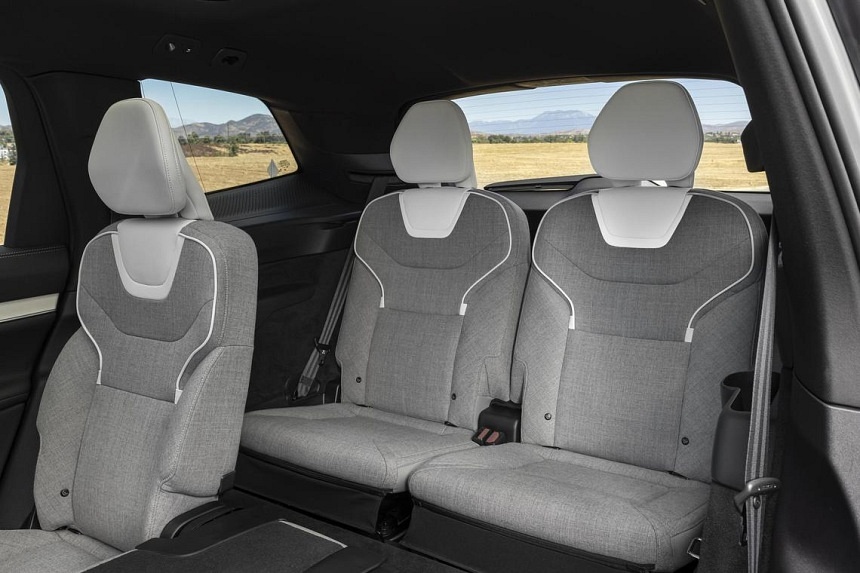
What is most immediately impressive about the EX90 is its astonishing silence. I am used to the absence of engine noise from EVs, but the EX90 is even more hushed.
In the Performance test car, road and wind noise are almost non-existent even at three-figure speeds, so that old motoring journalist’s cliche about feeling like you are wafting along on a cloud is no exaggeration here.
Apart from the Rolls-Royce Phantom, this is the quietest car I have ever driven. All the better to enjoy the audiophile-standard, Dolby Atmos-processed, 25-speaker Bowers & Wilkins sound system.
It helps that the ride is great too. Even on the test car’s big 22-inch rims, the EX90 breezes unruffled over all manner of bumps, ruts and potholes. Yet, the body control remains excellent – the car stays composed over bends and undulations, even with its chassis in soft setting.
Only on the diabolically twisty mountain roads of the test route does the need for the firm mode arise, and only because I am barrelling along at unprintable speeds. The burly EX90 laps up these challenges, dancing around bends with remarkable agility and accuracy, gripping stoutly and then surging ahead on a wave of effortless torque once the road straightens out.
Volvo touts its new car as a highly advanced computer on wheels, but that is to sell it short, because the EX90 is too good a car to be defined by its electronic gizmos.
User-interface shortcomings apart, it is fabulous all round, with class-topping refinement, comfort and handling. You know, the important things.
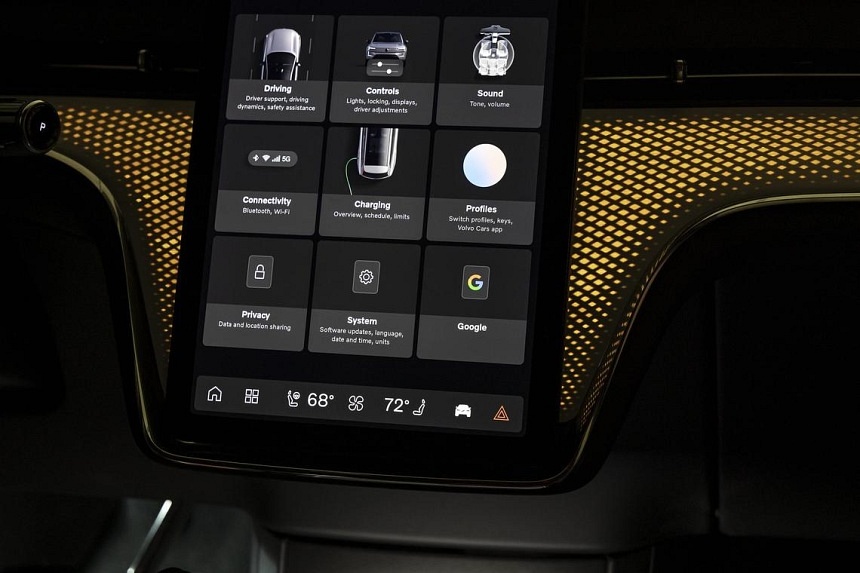
Overheard at the EX90 launch
- The EX90 is now being built at Volvo’s factory in Charleston, United States, but cars for Singapore will come from the plant in Chengdu, China, which will be starting production soon.
- The EX90 is 29mm shorter than the XC90, but has more headroom with the space-saving design of its panoramic roof.
- A single-motor, rear-wheel-drive variant with a smaller battery pack will be available in 2025.
Volvo EX90 Twin Motor; Twin Motor Performance
Price: Around $500,000, close to the XC90 Plug-in hybrid (estimate)
Motors: Front and rear with 111kWh lithium nickel manganese cobalt oxide battery
Power: 408hp (235hp front, 173hp rear); 517hp (245hp front, 272hp rear)
Torque: 770Nm (420Nm front, 350Nm rear); 910Nm (420Nm front, 490Nm rear)
Transmission: Single speed
0-100kmh: 5.9 seconds; 4.9 seconds
Top speed: 180km/h; 180km/h
Range: Up to 614km; up to 614km (provisional)
Agent: Wearnes Singapore
